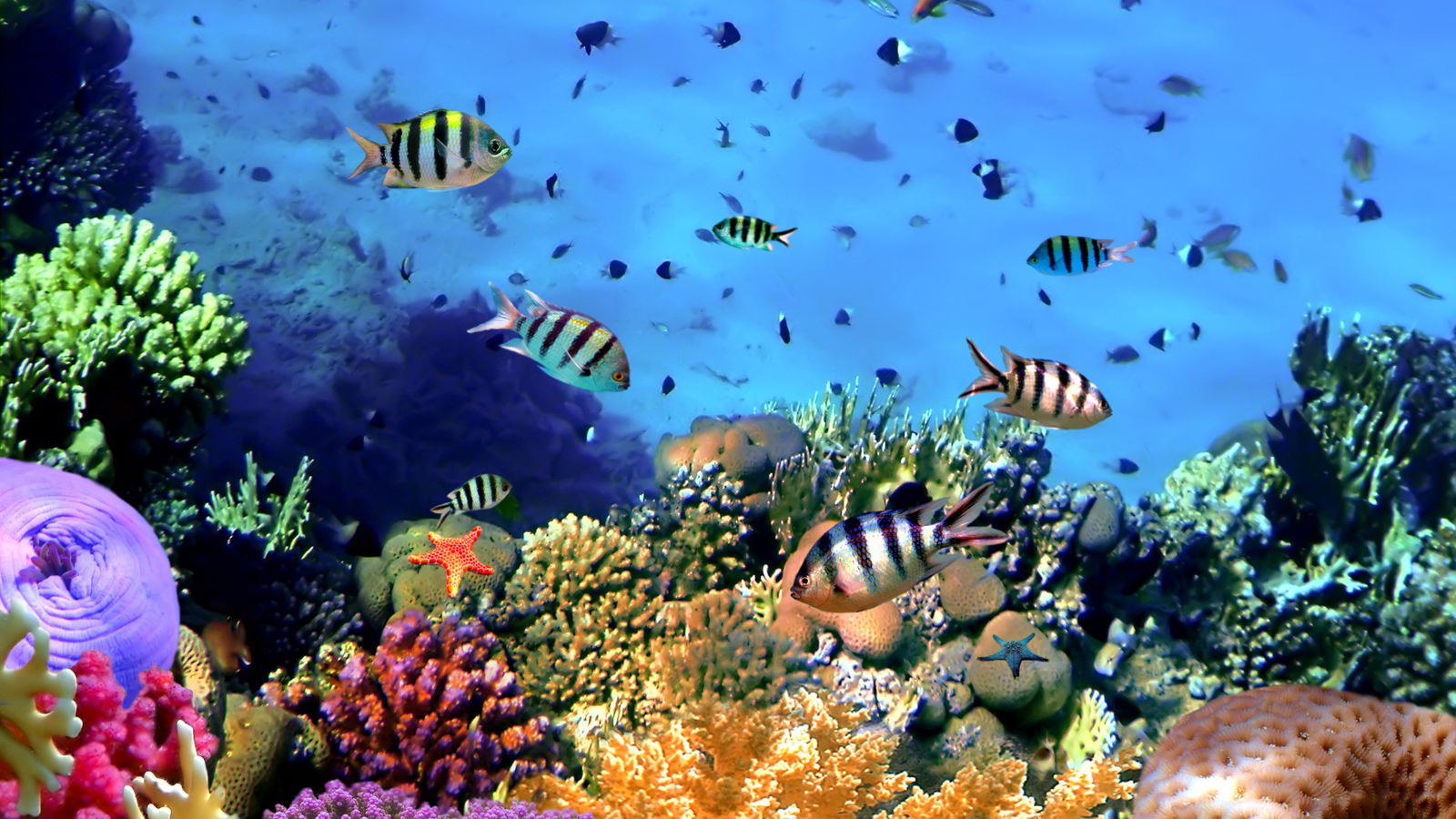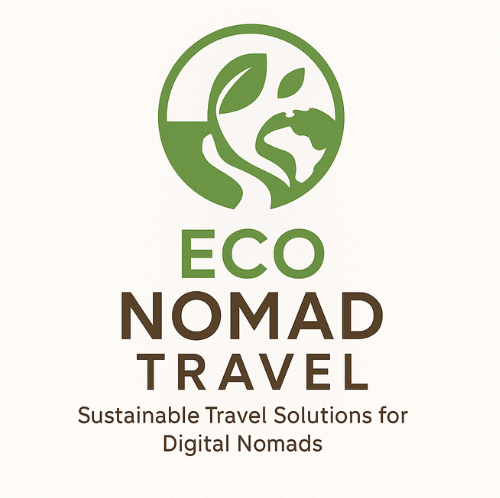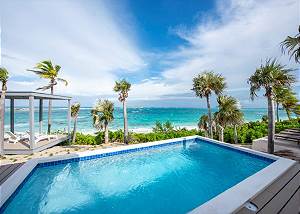
Reef-Safe and Skin-Safe: 2025 Sunscreen Guide for Island-Hopping Nomads
What to pack, what to avoid, and how to protect both your skin and the sea. We compare mineral vs. chemical filters, show you how to read labels, share UPF clothing shortcuts, and list reef-aware picks that travel well.
Disclosure: This guide includes affiliate links (Amazon + travel). If you buy via our links, Eco Nomad Travel may earn a commission at no extra cost to you.
Published: • Updated:
Key takeaways
- Default to mineral near reefs: non-nano zinc oxide or titanium dioxide. Avoid oxybenzone & octinoxate; they’re banned from sale in Hawaiʻi (Act 104) without prescription.
- Broad-spectrum SPF 30+ minimum for daily island life; SPF 50 if you burn easily, on water, or at altitude. Reapply every 2 hours—or after 40–80 minutes in water, per label.
- UPF clothing = fewer reapplications: a UPF 50 shirt blocks ~98% of UV; add hat + neck gaiter and halve your lotion use.
- 3-1-1 at airport security: carry-ons need ≤100 ml (3.4 oz) containers in a quart bag—pack big bottles in checked baggage.
- “Reef-safe” isn’t a regulated term: read the active ingredients; don’t rely on front-label marketing.
Related reads: Zero-waste DN packing · Eco-friendly travel tips · Sustainable travel 2025
Mineral vs. chemical (what’s really “reef-safe”?)
Mineral sunscreens use zinc oxide and/or titanium dioxide to reflect & scatter UV. They’re the only filters the U.S. FDA currently proposes as GRASE (generally recognized as safe and effective) under its latest order process. Many “chemical” filters remain under review for safety data.
Chemical sunscreens rely on organic UV filters (e.g., avobenzone, octisalate, homosalate, octocrylene). Some jurisdictions restrict certain filters due to reef concerns. In Hawaiʻi, it’s illegal to sell sunscreens with oxybenzone or octinoxate without a prescription; visitors still can bring other products, but mineral is the low-impact default near coral.
Our simple rule for reef zones
- Snorkeling/diving/reef-adjacent beaches: Use non-nano mineral (zinc, titanium).
- Urban touring or short exposure: Mineral first; “Hawaiʻi 104-compliant” chemical is a backup option if texture matters.
Note: “Reef-safe” on the front label isn’t regulated; always check the active ingredients list.
Packing & decanting for flights + boats
- Carry-on rule: liquids/aerosols must be ≤100 ml (3.4 oz) and fit in one quart bag. Bigger bottles go in checked baggage.
- Best travel formats: sticks and face sticks for day packs; 3 oz mineral lotions for carry-on; larger pump bottles in checked bags.
- Decanting: if you decant lotion for day use, label the new container with “SPF, brand, exp. date” and keep an original bottle in your luggage for full Drug Facts labeling.
- Boat days: pack a dry rash guard and wide-brim hat; reapply every 2 hours or per water-resistance claim (40/80 min).
Related: Eco-friendly travel kit 2025 · Low-impact travel habits
UPF apparel that replaces half your sunscreen
UPF (Ultraviolet Protection Factor) measures how much UVA+UVB a fabric lets through. UPF 50 blocks about 98% of rays, so only 1/50th reaches skin. A long-sleeve UPF shirt + neck gaiter + hat can slash how much lotion you need (and what washes into the water).
- Rash guard (UPF 50): wear dry on boats and for long swims.
- Wide-brim hat (dark underside reduces glare) + polarized sunglasses.
- Neck gaiter/buff: great for midday kayaks and scooter rides.
Laundry tip: rinse salt and sand; UV protection is woven/knit in, so it won’t wash out on quality garments.
Also read: Sustainable travel 2025 · Sustainable DN lifestyle
How to read sunscreen labels (fast)
- Active ingredients: choose zinc oxide and/or titanium dioxide for mineral. Avoid oxybenzone & octinoxate; they’re not allowed for retail sale in Hawaiʻi (Act 104).
- Broad-spectrum: protects UVA + UVB; required for full claims.
- SPF: daily island life = SPF 30+; on water or very fair skin, SPF 50 is wise.
- Water-resistant: labels must say 40 or 80 minutes. There’s no such thing as “waterproof”.
- Texture cues: lotion for reliable coverage; sticks for face/ears; sprays only when you can rub them in thoroughly and never near coral.
More label help: eco tips · zero-waste packing
Field-tested product picks (2025)
We prefer mineral (non-nano zinc/titanium) near coral and offer Hawaiʻi 104-compliant chemical backups if you need spray textures. Always rub sprays into skin well and avoid using them on boats or near the waterline.
All Good Sport Mineral Lotion SPF 30+ (3×3 oz)
- Non-nano zinc, face & body
- Travel-ready tubes (carry-on friendly)
- Water/sweat resistant
Badger Mineral SPF 50 (2.9 oz ×2)
- Non-nano zinc; high SPF
- Unscented; boat-day workhorse
- Biodegradable formula
Coral Safe SPF 50 Face Stick
- Zinc + Vitamin E; mess-free
- Great for ears, nose, lips
- Hawaiʻi & Mexico compliant
Florida Glow SPF 50 Spray (2-pack)
- Hawaiʻi 104 & Florida Keys compliant*, oxybenzone/octinoxate-free
- Broad spectrum, water resistant
- Use away from the water; rub in
Reef Safe SPF 50 Spray (360° Mist)
- Broad spectrum; travel size
- Lightweight texture
- No oxybenzone/octinoxate
SPF 50 Spray (3-pack) — Hawaiʻi compliant
- Oxybenzone/octinoxate-free
- Boat days: use off-water & rub in
- Reapply per 40/80-min label
Neutrogena Beach Defense SPF 70 Spray
- Oxybenzone/octinoxate-free; Act-104 compliant
- Fast-absorbing; urban/touring days
- Not for reef entry; prefer mineral
Usage tip: Sprays go on after you step off the boat and away from the waterline; rub them in like a lotion, and don’t use them in wind.
More to explore: plastic-light travel kit · sustainable DN destinations 2025
Deep dive: reef chemistry & policy (2025)
Why “reef safe sunscreen 2025” matters: where people swim, residues can enter coastal waters. Policies focus on reducing filters suspected to affect coral larvae or symbiotic algae. You’ll see places highlight education (shade/UPF first), signage at marine parks, and retail rules (e.g., Hawaiʻi Act 104’s ban on the retail sale of oxybenzone and octinoxate without prescription). In practice, travelers can help most by choosing mineral near reefs, applying 15–20 minutes before entering the water, and prioritizing UPF shirts so less lotion is needed overall.
Texture vs. impact: mineral lotions have improved but can still leave a cast. Tinted options can help cosmetic blending; on longer water days, many divers layer a UPF rash guard to minimize face/neck reapplications. Chemical sprays can feel “dry,” but even compliant formulas are best used away from the shoreline and rubbed in thoroughly to avoid overspray into sand/sea.
Next read on Eco Nomad Travel: eco-friendly travel tips · low-impact habits · carbon-neutral strategies
Ingredient glossary (A–Z)
Avobenzone: UVA filter often stabilized with other chemicals; reef policies vary. If you choose it, keep use away from reefs and prefer lotions over sprays in coastal zones.
Homosalate / Octisalate: UVB filters commonly used with others; read labels to avoid combos that include oxybenzone/octinoxate in older stock.
Non-nano zinc oxide: mineral UV filter; “non-nano” is generally marketed as >100 nm. There’s no universal consumer test standard, so rely on reputable brands and usage habits (apply, rub, reapply).
Octinoxate / Oxybenzone: filters restricted for retail sale in Hawaiʻi without prescription; many travelers avoid them globally in reef areas.
Titanium dioxide: mineral UV filter. Often paired with zinc for broader coverage. Can be slightly whiter; tinted blends help cosmetic elegance.
Want to build a plastic-light kit too? See our eco-friendly travel kit 2025.
Live deal widgets
Use these to price your island hop. They’re dynamic and may take a moment to load.
Plan smarter: flights, stays & eSIM
Set up a reef-aware island hop: pick walkable bases, book a boat-day rash guard, and line up eSIM so you can check the UV index in real time.
More from Eco Nomad Travel: eco travel places 2025 · top 10 sustainable DN destinations
FAQ (2025)
Is “reef-safe” a regulated label?
No. It’s a marketing term. Your best proxy is choosing non-nano mineral filters and avoiding oxybenzone/octinoxate. Check local rules where you swim.
What SPF should I use on tropical water days?
SPF 50, broad-spectrum, water-resistant. Reapply every 2 hours and per the 40/80-minute water-resistance on label.
Are sprays OK for reefs?
Sprays are convenient but should be applied away from the shore/boat and rubbed in thoroughly. Near reefs, prefer mineral lotions or sticks.
Does UPF clothing replace sunscreen?
Not entirely—but a UPF 50 shirt blocks ~98% UV, so you can use far less lotion. Still protect exposed areas (face, hands, ankles).
Can I carry a full-size sunscreen in my carry-on?
No. Carry-on liquids must be 100 ml/3.4 oz or less per container. Put larger bottles in checked baggage.
Final thoughts
For island-hopping nomads in 2025, the winning formula is simple: UPF layers first, then a non-nano mineral sunscreen on exposed skin, and smart timing (apply 15–20 minutes before you hit the water). Everything else—brand choice, texture, tint—should bend toward that low-impact baseline. Use sprays only off-shore and rub them in like a lotion; keep a face stick handy for ears, nose, and lips; and remember that the least sunscreen you need is the portion you replaced with clothing, shade, and route planning.
Want a complete, plastic-light kit that works from boats to bazaars? Start with our eco-friendly travel kit, then layer in our zero-waste packing guide and low-impact habits. If your trip grows into a month-plus stay, check digital nomad visas 2025 and build an itinerary around eco-forward bases.
Keep exploring: carbon-neutral travel · green travel 2025 · top DN destinations
Sources
- NOAA: Sunscreen & coral reefs (overview and mineral preference).
- Hawaiʻi Act 104: ban on retail sale of oxybenzone & octinoxate sunscreens (without prescription) effective 2021.
- FDA: current sunscreen orders—zinc oxide & titanium dioxide proposed GRASE; water-resistance labeling rules.
- Skin Cancer Foundation: what UPF means (UPF 50 ≈ 98% UV blocked).
- TSA: 3-1-1 liquids rule (100 ml / 3.4 oz limit in carry-ons).
- Sustainable Packaging Coalition: reuse & refill guidance for travel packaging choices.
Always verify local regulations at your destination. Reef protections and product rules evolve.
Reef-Safe Destinations & Trip Builder (2025)
Why add this planner? It connects sunscreen choices to real trip decisions—where you go, when you go, and how you pack—so readers spend less time researching and more time protecting skin and reefs. It also links out to our most useful Eco Nomad Travel resources for a strong internal linking footprint.
Where to go & when (seasonality, UV, & crowd patterns)
Island chains often have a shoulder season with warm seas, gentler UV peaks, and better room availability. Plan for earlier morning water time and late-afternoon swims; keep a UPF shirt/hat in your day bag so you can lower lotion use when the sun is most intense. If your route includes city days between islands, switch to a small face stick and keep the heavy mineral for boat/snorkel days.
- City stopovers: pair our plastic-light kit with lighter textures; pack a tinted mineral for photos and a clear mineral for water days.
- Boat/snorkel blocks: wear a UPF 50 rash guard, hat with dark under-brim, and polarized sunglasses to cut glare; lotion only for exposed areas.
- Mountain/volcano days: UV increases with altitude; SPF 50 mineral and a buff/neck gaiter pay off.
Marine-park etiquette (simple rules that help)
- Apply 15–20 minutes before entering the water; avoid sprays on the boat or at the shore—rub in thoroughly.
- Do not stand on coral; maintain body control with a light fin kick or flotation.
- Rinse gear after salt water and store sunscreens away from direct heat.
More low-impact habits: low-impact travel habits · eco tips · sustainable travel 2025
Internal guide hub (cluster links)
3 itinerary playbooks (copy & adapt)
- Weekend Islander (48–72h): carry-on only, UPF shirt + hat, one mineral face stick, one 3 oz mineral body lotion. Book a walkable base; use our kit list.
- Boat-Heavy Week: UPF rash guard + neck gaiter, SPF 50 mineral, small stick for ears/nose, after-sun aloe. Choose shaded decks, reapply every 2 hours or per 40/80-min label.
- City + Reef Combo (10–14d): two bases (city + island). Use public transit where possible; see low-impact habits and eco tips for daily routines.
Packing matrix (quick reference)
Face & high-exposure areas
- Mineral face stick (non-nano zinc) for ears, nose, lips
- Tinted mineral for city photos
- UPF hat; polarized sunglasses
Body & water days
- SPF 50 mineral lotion + reapply per 40/80-min claim
- UPF 50 rash guard + neck gaiter
- Sprays only away from shore, rubbed in like lotion
Explore more on Eco Nomad Travel
- Night trains in Europe (2025)
- Train vs plane emissions (2025)
- Eco-friendly travel kit (2025)
- Reef-safe sunscreen guide (2025)
- Zero-waste packing for nomads
- Eco-friendly travel tips


